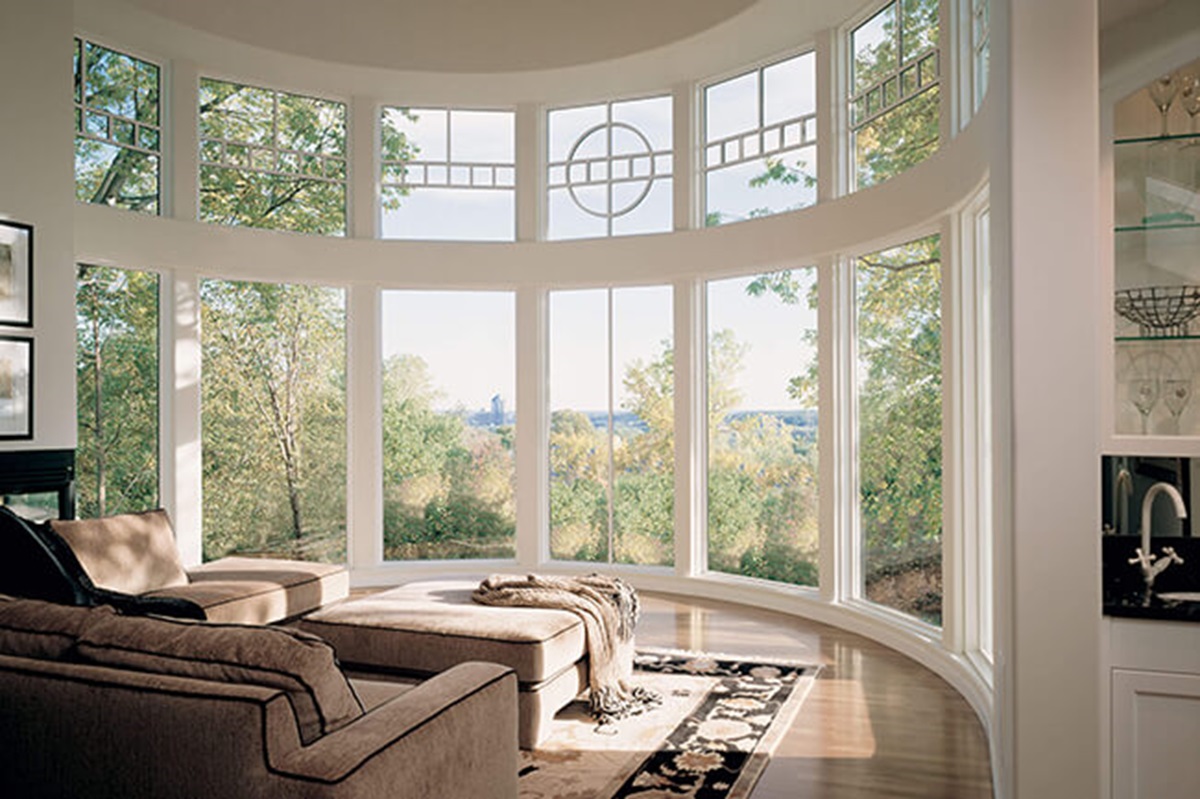Windows are more than just openings in your walls—they shape the way light enters your home, influence the views you enjoy, and contribute to the overall aesthetic of your living space. Among the many window styles available, bay and bow windows stand out for their elegance and functionality. But when it comes to choosing between the two, which one is right for your home? This article discusses the differences, benefits, and considerations associated with bay and bow windows, helping you make an informed decision that aligns with your style, space, and budget.
Understanding Bay Windows
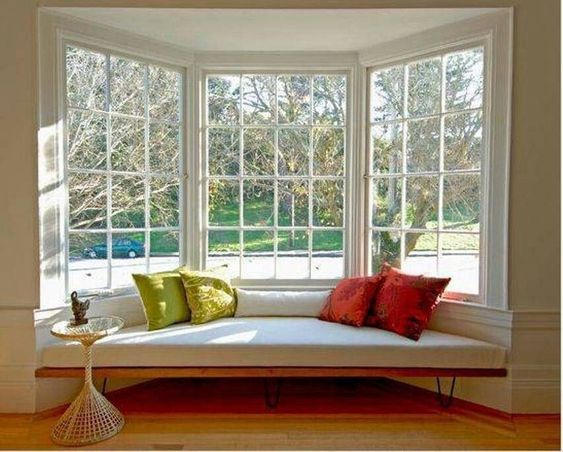
Bay windows are a popular architectural feature, recognized for their distinctive structure. Typically composed of three windows—one large central pane flanked by two smaller angled windows—bay windows protrude outward from the main walls of your home. This angular design creates a small alcove or nook inside the room, often used as a cozy seating area or additional storage space.
The central window is usually fixed, while the side windows are often operable, allowing for ventilation. The side windows are set at angles, usually 30 or 45 degrees, which gives bay windows their characteristic shape and depth. This protrusion adds dimension to both the interior and exterior of the home, making the space feel larger and more open.
Advantages of Bay Windows
- Increased Interior Space: One of the most significant advantages of bay windows is the additional interior space they create. The small nook formed by the window’s protrusion can be utilized in various ways. Homeowners often install built-in seating, creating a charming window seat perfect for reading, relaxing, or simply enjoying the view. Alternatively, the space can be used for storage or as a display area for plants, books, or decorative items.
- Enhanced Natural Light: Bay windows are excellent at capturing natural light from multiple directions. The angled side windows allow sunlight to stream into the room throughout the day, brightening your living space and reducing the need for artificial lighting. This not only creates a warm, inviting atmosphere but also contributes to energy savings.
- Improved Views: The design of bay windows offers a panoramic view of the outside world. Whether overlooking a garden, street, or scenic landscape, bay windows provide an expansive perspective that traditional flat windows cannot match. This can be particularly appealing in homes situated in picturesque locations.
Drawbacks of Bay Windows
- Space Consideration: While bay windows create additional interior space, they require more exterior space. The outward protrusion means that bay windows are not always suitable for homes with limited exterior space or narrow facades. Additionally, if the window is installed on an upper floor, it may require structural modifications to ensure proper support.
- Cost Implications: Bay windows can be more expensive than standard flat windows, both in terms of the initial purchase and installation. The complexity of the design, combined with the need for precise construction and structural support, can drive up costs. However, the added value to your home’s appearance and functionality may justify the investment.
Understanding Bow Windows
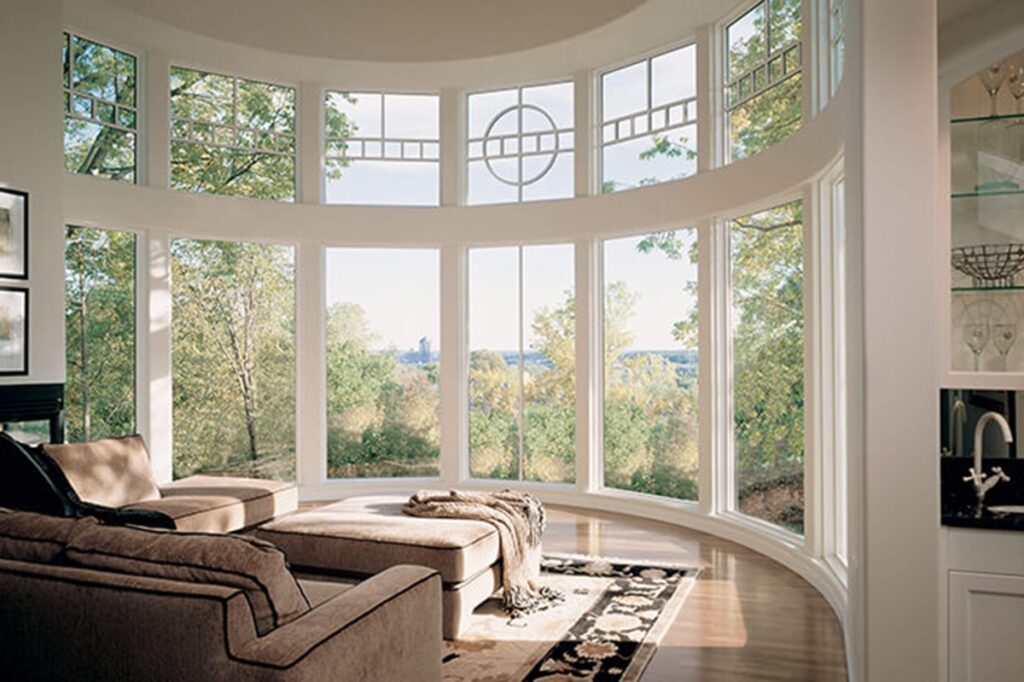
Bow windows are similar to bay windows but with a few key differences. Bow windows are composed of four or more window panes arranged in a curved, arch-like structure. This gentle curve creates a more rounded projection from the wall, as opposed to the angular shape of bay windows. The design of bow windows is softer and more fluid, lending a touch of elegance and sophistication to both the interior and exterior of a home.
Bow windows are often made up of casement or double-hung windows, allowing for various ventilation options. The more panes a bow window has, the more subtle the curve will be. This versatility in design makes bow windows a flexible choice for different architectural styles.
Advantages of Bow Windows
- Elegant Aesthetic: The graceful curve of a bow window adds a sense of luxury and elegance to a home’s facade. Unlike the more angular bay window, the bow window’s rounded appearance complements both traditional and contemporary architectural styles. This timeless appeal makes bow windows a popular choice for homeowners looking to enhance their home’s curb appeal.
- More Light and Views: With more window panes than a typical bay window, bow windows allow even more natural light to flood into your home. The wider arch of a bow window captures light from different angles throughout the day, creating a bright and airy atmosphere inside. Additionally, the panoramic view offered by bow windows is often more expansive, making the outdoors feel like an extension of your living space.
- Versatility in Design: Bow windows offer greater flexibility in design than bay windows. Since they can be composed of four, five, or even more panes, bow windows can be customized to fit various wall lengths and angles. This adaptability allows homeowners to create a window that perfectly matches their home’s proportions and aesthetic.
Drawbacks of Bow Windows
- Installation Complexity: The curved structure of bow windows makes installation more complex and time-consuming compared to bay windows. The additional panes and the need for precise curvature require specialized skills and may involve higher labor costs. Furthermore, the installation may require structural modifications to accommodate the window’s weight and projection.
- Space Requirements: Like bay windows, bow windows also require additional exterior space due to their outward projection. This makes them less suitable for homes with limited space or narrow facades. The larger the bow window, the more space it will require, both inside and outside the home.
Bay Windows vs. Bow Windows: A Direct Comparison
Aesthetic Appeal
When it comes to visual impact, both bay and bow windows have their unique charm. Bay windows are known for their sharp, angular lines that create a bold, architectural statement. They work well with both traditional and modern home styles, adding a dynamic element to the exterior. Inside, the angular nook creates a distinct focal point, often used for seating or decorative displays.
On the other hand, bow windows offer a softer, more elegant aesthetic. The gentle curve of a bow window is particularly well-suited to Victorian and Gothic Revival homes, where rounded shapes and ornate details are celebrated. Bow windows can also add a touch of refinement to contemporary homes, softening sharp lines and creating a harmonious flow between the indoors and outdoors.
Space Considerations
Both bay and bow windows create additional interior space, but the way they interact with the surrounding environment differs. Bay windows, with their angular design, are ideal for creating a cozy nook or expanding a small room. The space can be used for a window seat, storage, or a decorative feature that draws the eye.
Bow windows, with their rounded structure, provide a more subtle expansion of space. The curve of a bow window creates a sense of openness and fluidity, making the room feel larger without the sharp lines of a bay window. This makes bow windows an excellent choice for spaces where you want to maximize light and views without sacrificing interior flow.
However, both window types require adequate exterior space to accommodate their projection. In homes with limited exterior space, careful consideration must be given to how the window will affect both the interior and exterior design.
Cost Comparison
Cost is an important factor when choosing between bay and bow windows. Bay windows are generally less expensive than bow windows due to their simpler design and fewer panes. However, the cost can still be significant, especially if structural modifications are needed to support the window’s weight and projection.
Bow windows, with their curved structure and additional panes, tend to be more expensive. The complexity of installation, combined with the need for precise curvature, can drive up both material and labor costs. However, the added elegance and light that a bow window brings to a home may justify the higher price for many homeowners.
Lighting and Views
Both bay and bow windows are excellent for maximizing natural light and providing expansive views. However, the way they do so differs. Bay windows, with their angular design, allow light to enter from three different directions. This creates a bright, well-lit space throughout the day, as the sun moves across the sky. The panoramic view offered by bay windows is also a major advantage, making the outdoors feel more integrated with the interior.
Bow windows, with their curved design, capture even more light and offer an even wider view. The multiple panes allow light to enter from more angles, creating a bright and airy atmosphere inside. The gentle curve of a bow window also provides a more continuous view of the outdoors, making it an excellent choice for rooms with a scenic outlook.
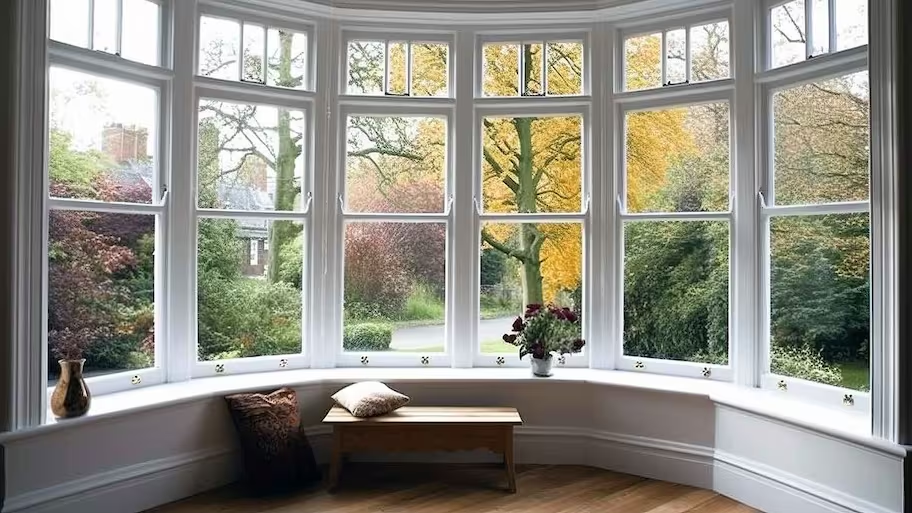
Which Window Style is Right for You?
Assessing Your Home’s Architecture
When choosing between bay and bow windows, one of the first things to consider is your home’s architectural style. Bay windows, with their angular lines and bold appearance, are well-suited to a variety of home styles, from traditional to modern. They work particularly well in homes with symmetrical facades or where a strong architectural statement is desired.
Bow windows, with their rounded shape and elegant appearance, are better suited to homes with softer lines and curves. They complement Victorian, Gothic Revival, and other styles that emphasize round shapes and ornate details. However, bow windows can also add a touch of sophistication to contemporary homes, especially those with a focus on blending indoor and outdoor spaces.
Considering Your Interior Space
The amount of interior space you have, and how you plan to use it, is another important factor in choosing between bay and bow windows. If you’re looking to create a cozy nook or expand a small room, a bay window may be the better choice. The angular design creates a distinct space that can be used for seating, storage, or decoration.
If you’re more interested in creating a sense of openness and maximizing light, a bow window may be the better option. The curved design of a bow window creates a more fluid expansion of space, making the room feel larger without disrupting the flow. This makes bow windows an excellent choice for living rooms, dining rooms, or any space where you want to enhance light and views.
Budget Considerations
Your budget will play a significant role in your decision. Bay windows are generally less expensive than bow windows, making them a good choice if you’re looking for a more affordable option that still provides a dramatic impact. However, if you’re willing to invest in a more complex and elegant design, a bow window may be worth the additional cost.
When considering your budget, it’s important to factor in not just the initial cost of the window but also the cost of installation and any necessary structural modifications. Both bay and bow windows require careful installation to ensure they are properly supported and weatherproofed, which can add to the overall cost.
Personal Style and Preferences
Ultimately, the choice between bay and bow windows will come down to your personal style and preferences. If you prefer sharp lines, bold statements, and a more traditional look, a bay window may be the right choice for you. If you’re drawn to softer curves, elegant designs, and a more refined aesthetic, a bow window may be a better fit.
Consider how each window type will fit with the rest of your home’s design, both inside and out. Think about how you want to use the space, the amount of light you want to bring in, and the view you want to create. By weighing all these factors, you can choose the window style that best reflects your personal taste and enhances your home’s overall appeal.
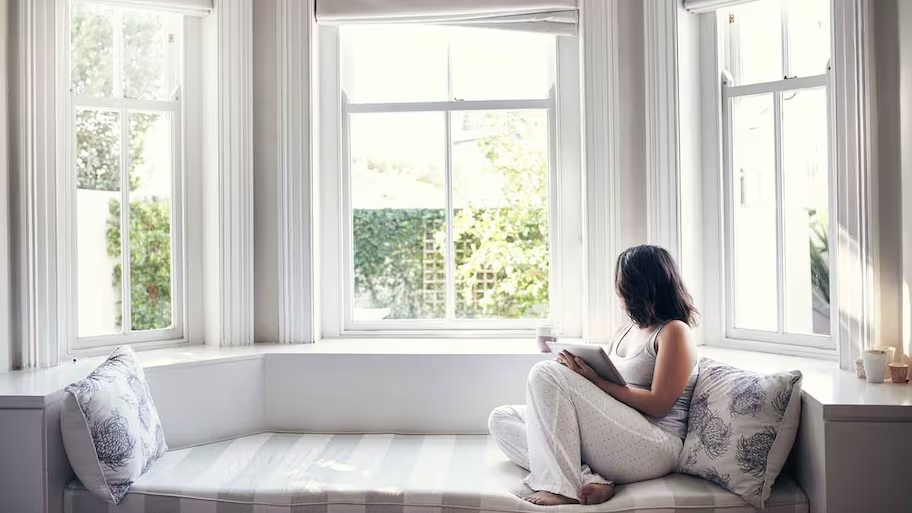
Installation and Maintenance Tips
Choosing a Professional Installer
Both bay and bow windows require precise installation to ensure they are properly supported, weatherproofed, and aesthetically pleasing. When choosing a professional installer, it’s important to look for someone with experience installing bay and bow windows specifically. Ask for references and look at examples of their previous work to ensure they have the skills and expertise needed for your project.
It’s also a good idea to get multiple quotes to compare prices and services. Make sure the installer you choose is licensed, insured, and offers a warranty on their work. This will give you peace of mind knowing that your windows will be installed correctly and that you’re protected if any issues arise.
Maintenance Tips
Maintaining bay and bow windows is essential to ensure they last for years to come. Regular cleaning is important to keep the glass and frames free of dirt, dust, and debris. Use a soft cloth or sponge with mild soap and water to clean the glass, and avoid using abrasive cleaners that could scratch the surface.
Check the seals around the windows regularly to ensure they are intact and free of gaps. If you notice any drafts or leaks, have them repaired promptly to prevent further damage. It’s also a good idea to inspect the frames and sills for signs of rot, warping, or other damage, especially if your windows are made of wood.
If your windows are operable, make sure to clean and lubricate the hinges and tracks regularly to ensure smooth operation. If you have curtains or blinds on your bay or bow windows, clean them regularly to prevent dust buildup.
Energy Efficiency Considerations
Energy efficiency is an important consideration for any window, and bay and bow windows are no exception. To maximize energy efficiency, choose windows with double or triple glazing, low-E coatings, and insulated frames. These features help to reduce heat transfer, keeping your home warm in the winter and cool in the summer.
If you live in an area with extreme temperatures, consider adding window treatments such as insulated curtains or blinds to further improve energy efficiency. You can also add weatherstripping around the windows to prevent drafts and reduce energy loss.
The Final Verdict
Bay and bow windows each offer unique benefits and can dramatically enhance the look and feel of your home. Bay windows are perfect for those who want to create a bold, angular statement and add a cozy nook or extra storage space. Bow windows, with their elegant curve, offer a more refined aesthetic and an expansive view of the outdoors.
When choosing between the two, consider your home’s architectural style, the amount of space you have, your budget, and your personal preferences. By carefully weighing these factors, you can select the window style that best suits your needs and enhances the overall appeal of your home.
Whether you choose a bay or bow window, both options will bring in natural light, create a connection to the outdoors, and add value to your home. So take your time, explore your options, and make the choice that will bring you the most joy and satisfaction for years to come.

